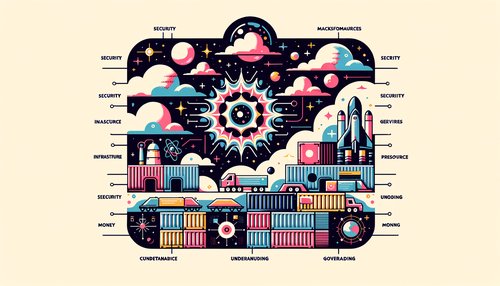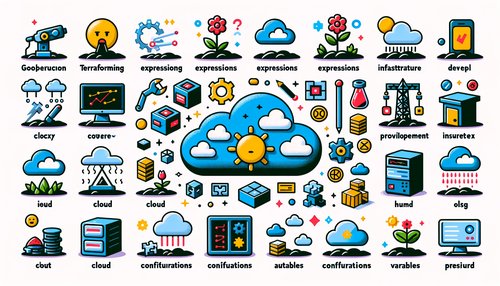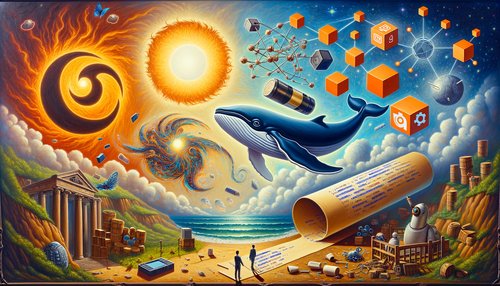Unlocking the Future of Efficient Computing: How Serverless Docker and Python are Revolutionizing Development Workflows
Welcome to the edge of technological innovation, where the fusion of Serverless computing, Docker, and Python is reshaping the landscape of software development. This breakthrough trio promises to streamline development workflows, making them more efficient, scalable, and cost-effective. In this comprehensive exploration, we'll dive into how these technologies are revolutionizing the development process, offering practical tips, examples, and insights to harness their full potential. Whether you're a seasoned developer or just starting, this post will guide you through the future of efficient computing.
The Rise of Serverless Computing
Serverless computing, a paradigm shift in cloud computing, abstracts server management and infrastructure decisions away from the developer. It allows developers to focus solely on writing code, with the cloud provider dynamically managing the allocation of machine resources. This section will explore the benefits of serverless computing, including cost savings, scalability, and enhanced developer productivity. We'll also touch on how serverless architectures are becoming increasingly popular for deploying microservices and event-driven applications.
Docker: Containerization at Its Best
Docker has emerged as a cornerstone technology for developers, offering a lightweight solution for containerizing applications. Containers encapsulate an application's code, configurations, and dependencies into a single object, ensuring consistent environments from development to production. This segment will delve into Docker's role in simplifying deployment processes, its synergy with serverless architectures, and how it contributes to reducing the "it works on my machine" problem. Practical tips on building efficient Docker images and managing containers will also be provided.
Python: The Language of Choice
Python's simplicity, readability, and vast ecosystem of libraries and frameworks make it an ideal language for cutting-edge development projects. In this section, we'll discuss Python's compatibility with serverless and Docker, showcasing how it accelerates development cycles and enhances productivity. Examples of Python's use in building serverless applications, creating Docker containers, and leveraging Python's rich set of libraries for data analysis, machine learning, and web development will be highlighted.
Integrating Serverless, Docker, and Python
Combining serverless computing with Docker and Python creates a powerful toolkit for developers. This part will guide you through integrating these technologies to optimize your development workflows. We'll cover best practices for deploying Python applications in serverless environments using Docker containers, including how to manage dependencies, configure serverless environments, and monitor application performance. Real-world examples will illustrate how this integration can lead to more efficient and scalable applications.
Practical Tips and Insights
To make the most out of serverless Docker and Python, here are some practical tips and insights:
- Start small: Begin with a simple, non-critical application to get a feel for working with serverless Docker and Python.
- Embrace automation: Use automation tools for continuous integration and deployment (CI/CD) to streamline your development pipeline.
- Monitor and optimize: Continuously monitor your applications for performance and cost. Use the insights gained to optimize resource usage.
- Stay up to date: The technologies involved are rapidly evolving. Keeping abreast of the latest developments will help you leverage new features and best practices.
Conclusion: The Road Ahead
The convergence of serverless computing, Docker, and Python is setting a new standard for efficient, scalable, and cost-effective software development. By embracing these technologies, developers can significantly reduce the complexity and overhead associated with traditional development workflows. As we've seen, the potential benefits are immense, but realizing them requires a thoughtful approach to integration and best practices. We encourage you to experiment with these technologies, apply the tips shared in this post, and explore how they can transform your development projects. The future of efficient computing is here, and it's time to unlock its potential.
Ready to revolutionize your development workflows? Dive into the world of serverless Docker and Python, and start building more efficient, scalable, and cost-effective applications today.
Recent Posts

Unlocking the Power of Terraform: Mastering Conditional Expressions for Smarter Infrastructure Automation

Unveiling the Future: Navigating the Public Interface of Apache Airflow for Streamlined Workflow Management
Apache Airflow
Mastering Workflow Automation: Unconventional Apache Airflow How-To Guides for the Modern Data Enthusiast
Apache Airflow
Mastering the Cloud: Unveiling AWS CloudFormation Best Practices for Seamless Infrastructure Management



